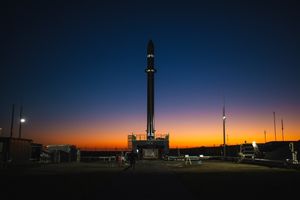Chevron Corporation (NYSE: CVX) today announced a simplified organizational structure and senior leadership changes intended to strengthen execution and pace to deliver on the company’s objectives of higher returns and lower carbon.
Effective October 1, 2022, the company will consolidate its Upstream, Midstream and Downstream business segments under a new executive vice president, Oil, Products & Gas, who will oversee the full value chain. As part of this change, the company is consolidating into two Upstream regions – Americas Exploration & Production and International Exploration & Production.
The company is also organizing its Strategy & Sustainability, Corporate Affairs and Business Development functions under a new executive vice president, Strategy, Policy & Development.
The changes build on the company’s enterprise-wide transformation in 2020, which has produced improved operational and financial results. The new leadership structure is expected to enable a more integrated approach to capital allocation, asset class excellence and value chain optimization, and facilitate more effective external engagement and business development impact.
“We’ve made significant progress over the last two years, and these changes position us to further enhance execution across all aspects of our business as the energy system evolves,” said Mike Wirth, Chevron’s chairman and chief executive officer. “It will also bring strategy, policy and business development into tighter alignment as we focus on leveraging our strengths to deliver lower carbon energy to a growing world.”
The company made the following personnel appointments, effective October 1, 2022:
- Mark Nelson was named executive vice president, Strategy, Policy & Development
- Nigel Hearne was named executive vice president, Oil, Products & Gas
- Clay Neff was named president, International Exploration & Production
- Bruce Niemeyer was named president, Americas Exploration & Production
- Balaji Krishnamurthy was named vice president, Chevron Strategy & Sustainability
In addition, the company made the following personnel announcements:
- Jay Johnson, executive vice president, Upstream, was named executive vice president, senior advisor, effective October 1, 2022, and will support the transition until January 31, 2023. Mr. Johnson has more than 41 years of service to the company.
- Jay Pryor, vice president, Chevron Business Development, will retire after more than 43 years of service to the company, effective July 29, 2022.
- Steve Green, president, Chevron North America Exploration & Production, will retire after more than 24 years of service to the company and its predecessors, effective September 30, 2022.
“I’m confident that our new team will continue to effectively lead the company in delivering the affordable, reliable and ever-cleaner energy that enables human progress,” said Wirth. “Their contributions will be essential in enabling us to advance our objectives of higher returns, lower carbon.”
“I want to especially thank Jay Johnson, Jay Pryor and Steve Green for all they’ve done for our company, our industry and our employees over the course of their careers. Each of them exemplifies the finest qualities of character, integrity and excellence, and their influence will be felt for many decades still to come,” Wirth added.
Nelson and Hearne will report to Wirth in their new roles.
Chevron is one of the world’s leading integrated energy companies. We believe affordable, reliable and ever-cleaner energy is essential to achieving a more prosperous and sustainable world. Chevron produces crude oil and natural gas; manufactures transportation fuels, lubricants, petrochemicals and additives; and develops technologies that enhance our business and the industry. We are focused on lowering the carbon intensity in our operations and seeking to grow lower carbon businesses along with our traditional business lines. More information about Chevron is available at www.chevron.com.
CAUTIONARY STATEMENTS RELEVANT TO FORWARD-LOOKING INFORMATION FOR THE PURPOSE OF “SAFE HARBOR” PROVISIONS OF THE PRIVATE SECURITIES LITIGATION REFORM ACT OF 1995
This news release contains forward-looking statements relating to Chevron’s operations and energy transition plans that are based on management’s current expectations, estimates and projections about the petroleum, chemicals and other energy-related industries. Words or phrases such as “anticipates,” “expects,” “intends,” “plans,” “targets,” “advances,” “commits,” “drives,” “aims,” “forecasts,” “projects,” “believes,” “approaches,” “seeks,” “schedules,” “estimates,” “positions,” “pursues,” “may,” “can,” “could,” “should,” “will,” “budgets,” “outlook,” “trends,” “guidance,” “focus,” “on track,” “goals,” “objectives,” “strategies,” “opportunities,” “poised,” “potential,” “ambitions,” “aspires” and similar expressions are intended to identify such forward-looking statements. These statements are not guarantees of future performance and are subject to certain risks, uncertainties and other factors, many of which are beyond the company’s control and are difficult to predict. Therefore, actual outcomes and results may differ materially from what is expressed or forecasted in such forward-looking statements. The reader should not place undue reliance on these forward-looking statements, which speak only as of the date of this news release. Unless legally required, Chevron undertakes no obligation to update publicly any forward-looking statements, whether as a result of new information, future events or otherwise.
Among the important factors that could cause actual results to differ materially from those in the forward-looking statements are: changing crude oil and natural gas prices and demand for the company’s products, and production curtailments due to market conditions; crude oil production quotas or other actions that might be imposed by the Organization of Petroleum Exporting Countries and other producing countries; technological advancements; changes to government policies in the countries in which the company operates; public health crises, such as pandemics (including coronavirus (COVID-19)) and epidemics, and any related government policies and actions; disruptions in the company’s global supply chain, including supply chain constraints and escalation of the cost of goods and services; changing economic, regulatory and political environments in the various countries in which the company operates; general domestic and international economic, market and political conditions, including the military conflict between Russia and Ukraine and the global response to such conflict; changing refining, marketing and chemicals margins; actions of competitors or regulators; timing of exploration expenses; timing of crude oil liftings; the competitiveness of alternate-energy sources or product substitutes; development of large carbon capture and offset markets; the results of operations and financial condition of the company’s suppliers, vendors, partners and equity affiliates, particularly during the COVID-19 pandemic; the inability or failure of the company’s joint-venture partners to fund their share of operations and development activities; the potential failure to achieve expected net production from existing and future crude oil and natural gas development projects; potential delays in the development, construction or start-up of planned projects; the potential disruption or interruption of the company’s operations due to war, accidents, political events, civil unrest, severe weather, cyber threats, terrorist acts, or other natural or human causes beyond the company’s control; the potential liability for remedial actions or assessments under existing or future environmental regulations and litigation; significant operational, investment or product changes undertaken or required by existing or future environmental statutes and regulations, including international agreements and national or regional legislation and regulatory measures to limit or reduce greenhouse gas emissions; the potential liability resulting from pending or future litigation; the company’s future acquisitions or dispositions of assets or shares or the delay or failure of such transactions to close based on required closing conditions; the potential for gains and losses from asset dispositions or impairments; government mandated sales, divestitures, recapitalizations, taxes and tax audits, tariffs, sanctions, changes in fiscal terms or restrictions on scope of company operations; foreign currency movements compared with the U.S. dollar; material reductions in corporate liquidity and access to debt markets; the receipt of required Board authorizations to implement capital allocation strategies, including future stock repurchase programs and dividend payments; the effects of changed accounting rules under generally accepted accounting principles promulgated by rule-setting bodies; the company’s ability to identify and mitigate the risks and hazards inherent in operating in the global energy industry; and the factors set forth under the heading “Risk Factors” on pages 20 through 25 of the company's 2021 Annual Report on Form 10-K and in subsequent filings with the U.S. Securities and Exchange Commission. Other unpredictable or unknown factors not discussed in this news release could also have material adverse effects on forward-looking statements.
View source version on businesswire.com: https://www.businesswire.com/news/home/20220526005269/en/
Contacts
Braden Reddall -- +1 925-842-2209





